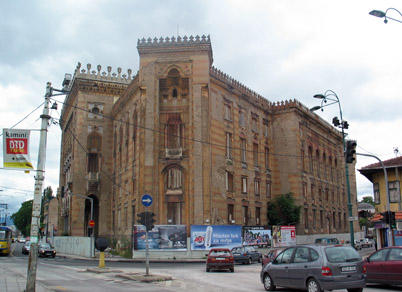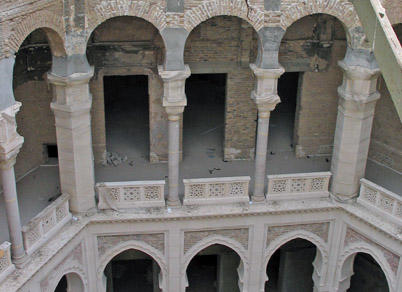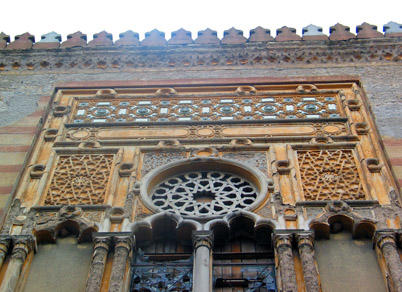Sarajevo City Hall
2008 World Monuments Watch
Situated at the intersection of three major streets in Sarajevo, the City Hall is a monument to the multiculturalism of Bosnia. Built between 1892 and 1894, the pseudo-Moorish building honored the Muslim background of this Austro-Hungarian territory. The façade is based on Mamluk-period buildings in Cairo. The building has been used for various municipal purposes since its construction, including as a city court and parliament house, which it was until 1948, when it became the National and University Library of Bosnia and Herzegovina. On August 25-26, 1992, the City Hall was hit by heavy artillery and incendiary bombs. The hall was set ablaze and the entire library holdings were lost. The fire caused severe damage to the structural and decorative elements of the building. In 1996, the government of Austria funded an initial restoration effort that focused on load-bearing walls and masonry. The European Commission followed in 1999 with funds to continue restoration of structural elements. Despite this funding, neither a feasibility study nor a management plan has been undertaken, and much of the work has been done on an emergency and ad hoc basis. As a temporary solution to both stabilize the building and keep out intruders, the building has been shuttered. This has created a dry microclimate inside the hall and has led to further deterioration of the façade and roof. In 2003, the government of Sarajevo decided that the building, once restored, should once again be used as the seat of city administration, as well as the National and University Library. It is hoped that Watch listing will lead to the restoration of this important symbol of Sarajevo.
Since the Watch
Following inclusion in the World Monuments Watch, restoration of the City Hall continued, with funding from many European countries including Spain and Hungary. In May 2014 the building reopened with a public ceremony. The restoration was completed in time to mark the centenary of World War I, triggered by the assassination of the Austrian Archduke Franz Ferdinand as he left a reception at the building in June 1914. The building now houses the national and university libraries, the city council, and a museum. November 2014



